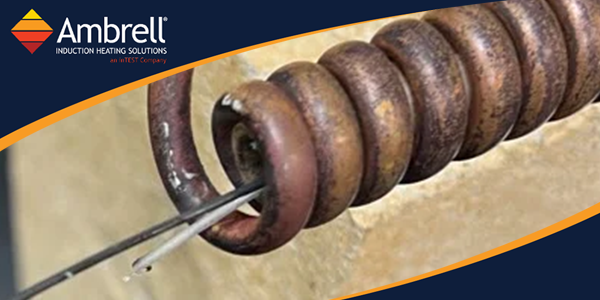Curing Material on an Aluminum Mandrel
Objective Heat a customer supplied aluminum cylinder to 80-120°C for a material curing application. More application notes
Processes
Processes: More
Processes: More

Industries:
Industries: More
Industries: More
Industries: More

Products:
Products: More
Services:
Services: More

Learn:
Learn: More
About:


A company needed to preheat alloy wire for their continuous extrusion process. They contacted THE LAB at Ambrell to see if induction might be the right heating process for their application. The end product was extruded plastic products and they sent samples into THE LAB for feasibility testing.
More Heating Application Notes
A specially designed helical coil was used to provide heat for testing. Initial tests were conducted to optimize the power delivered to the part and to understand the heating patterns achieved. The target temperature was 400° F (204° C) for the application and the frequency was 258 kHz. An Ambrell EASYHEAT 6 kW/150-400 kHz induction heating system was used for the application.
THE LAB at Ambrell confirmed the viability of the application. The target temperature was achieved within just 0.5 seconds. The client will realize several benefits using induction heating including speed, repeatability, and energy efficiency.
THE LAB at Ambrell has considerable experience with preheating/wire heating applications, which enabled them to deliver a solution that met the client's requirements. To learn more about free application testing, visit our page about THE LAB to get the process started.

Objective Heat a customer supplied aluminum cylinder to 80-120°C for a material curing application. More application notes

In today’s manufacturing landscape, efficiency, precision, and sustainability are critical. Induction heating—a process that uses electromagnetic...

When it comes to many manufacturing processes, including this forging application, precision and efficiency are critical. Traditional heating methods...